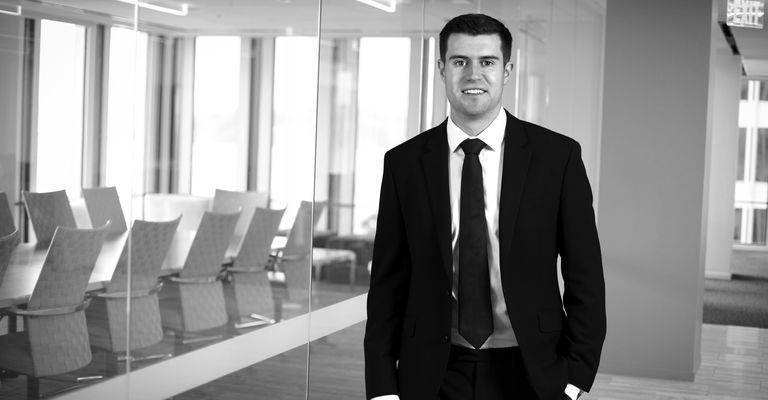Insights
English Court decides Covid-19 is a “catastrophe”
Feb 13, 2024Summary
The English Court has, for the first time, considered the meaning of a “catastrophe”, as well as how Hours Clauses work in the context of non-damage business interruption losses claimed under two Property Catastrophe Excess of Loss Reinsurance Treaties. While the Covid-19 pandemic may feel like a distant memory to some, disputes about the recovery of Covid-19 losses continue to trouble many reinsureds and reinsurers. The two key issues considered by the Commercial Court in determining appeals from arbitration awards made in Unipol Re v Covéa and Markel v Gen Re may bring welcome, and valuable, guidance to those in the reinsurance industry debating these terms.
Those underwriting or purchasing “catastrophe” covers may also want to carefully consider this judgment and whether the Court’s approach to the meaning of that word aligns with their coverage expectations.
The issues under appeal
There were two issues that the Commercial Court had to determine when considering the appeals from these two Arbitration Awards in the Covéa and Markel cases. Namely whether the Tribunals in each case had erred in their findings as to:
- the meaning of the word “catastrophe”; and
- the operation of the “Hours Clause” in the context of non-damage (rather than damage-based) business interruption losses.
Executive Summary
The Court’s decision favoured the Reinsureds (Covéa and Markel) on both issues:
- Each of Covéa and Markel had identified a valid “catastrophe” according to which they could aggregate their Covid-19 losses; and
- There was no basis for distinguishing between damage-based and non-damage business interruption losses when considering how the Hours Clause operated. Further, the underlying losses did not occur “day-by-day”, which meant that the Reinsureds were not limited to recovering a mere 7 days’ worth of business interruption losses (instead they could claim all loss directly caused by the catastrophe as long as that loss first occurred within the hours period).
The Court approved Covéa’s catastrophe as: “the outbreak of Covid-19 in the United Kingdom, reflected in an exponential increase in the number of infections during a period up to and including 18 March 2020”.
It also approved Markel’s formulation of the catastrophe as: “the 18 March 2020 closure order” (albeit this was “inseparably linked to the emergency of a devastating pandemic”).
The judgment may now stand as authority for the position that while the outbreak of COVID-19 cases/the pandemic in the UK may not be an “occurrence” or an “event” (following the Commercial Court decision in Stonegate v MS Amlin and ors), it may fairly be considered a “catastrophe” when viewed in the context of the typical language of a Property Cat XoL Treaty.
Catastrophe
The word ‘catastrophe’ had not previously been considered by an English Court in the context of reinsurance. In this case, the judge (Mr Justice Foxton) was willing to take into account the origins of “catastrophe” language in Property Catastrophe XoL Treaties (i.e. that it was introduced as an alternative to “event” following the severe winter of 1962/1963), as well as the subsequent development of this term by the market. He did however caution that (i) there were limits on the weight that could be attributed to this ‘factual matrix’ and that, (ii) in any case, it did not lead him to a different conclusion than if he simply applied ordinary principles of contractual interpretation.
As to the arguments in this case, Reinsurers’ (Unipol Re and Gen Re) advanced 3 main reasons as to why they said there was no ‘catastrophe’ in the context of the Covid-19 pandemic. All of these were rejected by the Court on the following bases. It held:
- A catastrophe did not have to be something that can “cause physical damage to property”. By the time the Reinsurance Contracts were written, the types of risks that were written into a property book had evolved and so the nature of the anticipated “catastrophes” had to change with that: the (in)ability to use a property (irrespective of whether there had been damage) was a part of a “bundle of rights” for a modern policyholder. The Court also disagreed with Reinsurers that the use of “whatsoever nature” in the Hours Clause was intended to limit cover to those catastrophes that caused physical damage (akin to many, if not all, of the examples in the Hours Clause itself);
- A catastrophe does not require a “sudden and violent event or happening”. While certain dictionary definitions (and market practice) might support this position, the Court noted that this was not consistent across all dictionary definitions. Nor did the examples of catastrophes listed in the Hours Clause meet this condition either. Equally, the Court noted that difficulties in identifying what is ‘sudden’ necessitate a sense of caution before holding that this is a requirement of there having been a catastrophe; and
- In the context of the Reinsurance Contracts in issue, a catastrophe doesn’t have to satisfy the “unities test” (a common tool for identifying whether there has been an aggregating “event”). Given there were references in the Hours Clause to Loss Occurrences/Events of “504 consecutive hours” with a broad geographical scope, the Court held that the unities test clearly did not apply. A “catastrophe” is therefore distinguishable from an “occurrence” or “event” in that sense. However, it is important to emphasise that this conclusion was reached in part because of the contractual context in which the word “catastrophe” is used.
Mr Justice Foxton refrained from defining what a “catastrophe” is (because of its heavy dependence on the “commercial and contractual context”). Therefore, it may be that different conclusions on what a “catastrophe” is might be reached in the future. Nevertheless, the judge did proceed to set out the following principles:
- A catastrophe must be able to directly cause the individual losses;
- A catastrophe must be a “coherent, particular and readily identifiable happening”, with an existence, identity and ‘catastrophic character’ that arises from more than the mere fact that it causes substantial losses;
- There has to be a “radical discontinuity” with what came before it. In that sense it cannot be “a collection of things or a continuing state of affairs” (and thus it is distinct from “cause”-based aggregation). It should be possible to identify when a catastrophe comes into existence and ceases to be, even if an attempt at a precise temporal definition might offer scope for debate and dispute; and
- A catastrophe involves an adverse change on a significant scale from that which preceded it.
Given the conclusion reached by the Court in the Covéa case in particular, the judgment may stand as authority that the outbreak of COVID-19 cases/the pandemic in the UK in March 2020 may fairly be considered a “catastrophe” (in the context of certain types of Property Cat XoL Treaties). This is a marked difference from the conclusion reached by the Court on “occurrence”/”event” language in Stonegate.
Interestingly, the judge did not offer a view on whether a government order in isolation could be a catastrophe. There is clearly scope for further debate on that issue. However, Mr Justice Foxton accepted that in the context of Covid-19, the government order on 18 March 2020 was “inseparably linked to the emergency of a devastating pandemic” and that this therefore met the threshold of a “catastrophe” in the Markel case.
Hours Clause
In positive news for many reinsureds, the conclusion reached by the Court on this issue means that the Hours Clause will operate to allow the recovery of all business interruption losses that occurred within 168 hours of a catastrophe, and not just the first 168 hours of any loss.
An Hours Clause is a common feature of Property Cat XoL Treaties whereby the duration and extent of a Loss Occurrence/Event is limited (or perhaps in some cases broadened) to a particular number of consecutive hours (usually 72, 168 or 504 hours).
Often the application of the Hours Clause is not the subject of debate. In damage-based BI cover, if a hurricane destroys commercial premises, the business interruption loss recoverable by a reinsured from its reinsurer is not limited to 168 consecutive hours (i.e. a mere 7 days). The loss recoverable is that of the entirety of the period for which the reinsured has indemnified its policyholder (months, or possibly years).
However, in the present appeals Reinsurers sought to argue that the same principle does not apply where the losses at issue are non-damage business interruption losses (not damage-based ones).
The judge rejected Reinsurers’ arguments. He was “not persuaded that a clear line can be drawn” between the two scenarios, given the similarities between damage-based business interruption and non-damage business interruption. One such similarity was the fact that the inability of a policyholder to use its premises because of Covid-19 was immediately detrimental to it – the same as with damage-based business interruption.
Critically for the Covéa and Markel, the Court also rejected the argument that Covid-19 BI losses occurred “day-by-day” (i.e. the argument that a new loss occurred each day a business was shut). The judge drew a comparison with the decisions in Stonegate and Various Eateries where it was held that if a loss occurred prior to the expiry of an insurance policy, and continued after the policy ended, the whole loss would be recoverable (not just until policy expiry). The judge also commented that if a loss was held to occur ‘day by day’ it would have “uncommercial consequences”. Another potential noteworthy point for the market.
Conclusion
The Court’s guidance as to the interpretation of the Hours Clause for non-damage business interruption losses is helpful.
On “catastrophe” it will be interesting to see how the market responds. Will reinsurers now seek to narrow cover, or more clearly define the cover they intend to give? Alternatively, will we see changes in the premium charged for Property Cat XoL treaties? Or does the Court’s view as to the meaning of “catastrophe” align with underwriters and buyers of Property Cat reinsurance?
This judgment is far from the end of the story on Covid-19 reinsurance disputes though. Many issues still remain:
- The interpretation of treaties that provide for cover for “Natural Perils, including but not limited to…” and “Non-Natural perils as follows” are unlikely to be significantly impacted by this judgment.
- Equally, this case only addressed the aggregation of UK Covid-19 business interruption losses. It remains to be seen how this judgment might be harnessed by reinsureds and reinsurers alike who seek to aggregate Covid-19 business interruption losses across multiple jurisdictions.
The judgment is also interesting because it represents a rare situation where an appeal of a (re)insurance Arbitration Award has been successful.
Will any of the parties seek permission to appeal this judgment? It is possible, but it remains to be seen whether any party seeks permission, whether permission would be granted and, if it is, whether the Court of Appeal would reach a different conclusion.
Related Capabilities
-
Insurance & Reinsurance





